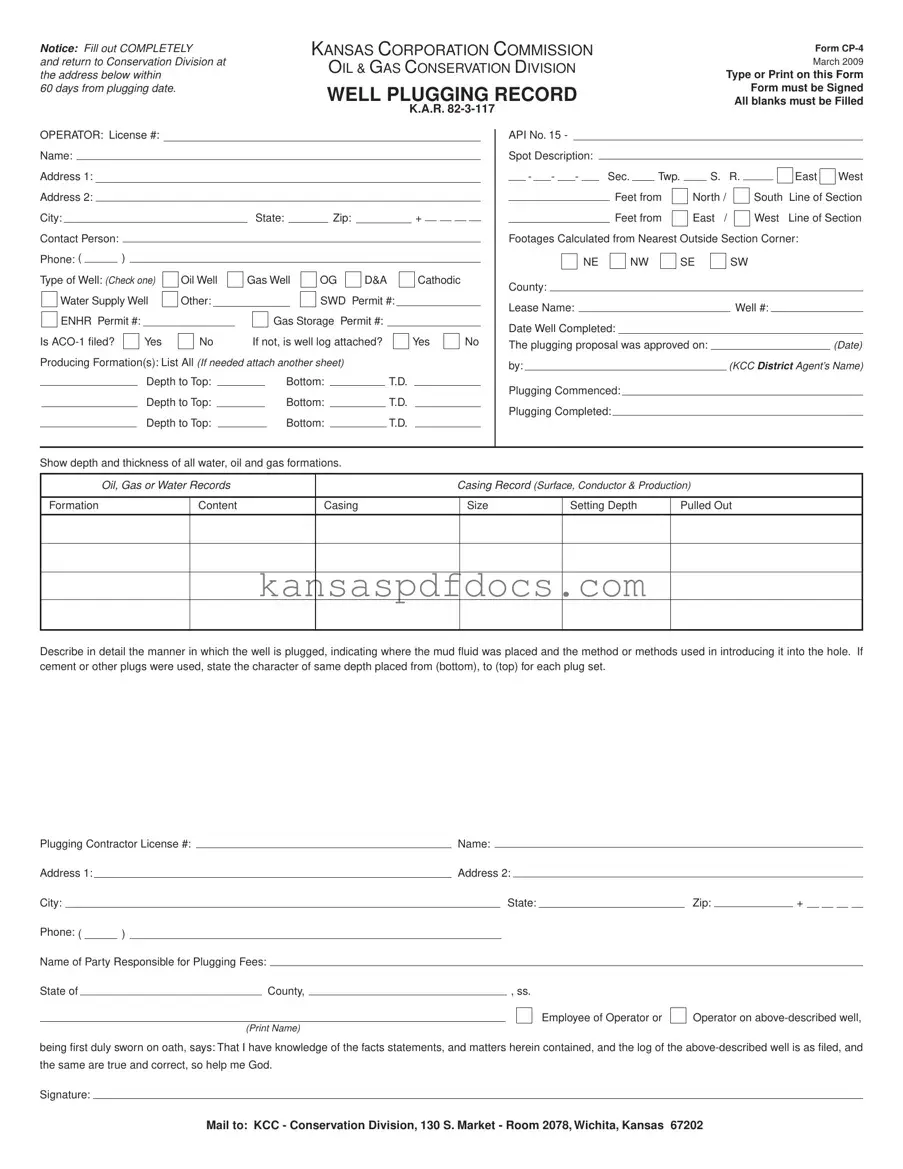The Kansas CP-4 form plays a crucial role in the oil and gas industry, particularly in the process of well plugging. This form is essential for operators to document the plugging of wells, ensuring compliance with state regulations. It requires detailed information about the well, including the operator's contact details, the type of well, and its specific location. Operators must indicate whether the well is an oil, gas, or water supply well, and they must provide information about the formations encountered during drilling. The form also mandates the recording of the plugging procedure, including the materials used and the depths at which plugs were set. All sections of the form must be filled out completely and signed, reflecting the operator's affirmation of the accuracy of the information provided. Additionally, the form must be submitted to the Kansas Corporation Commission's Conservation Division within 60 days of the well's plugging date. This ensures that the state maintains accurate records and can monitor compliance with environmental and safety standards.
